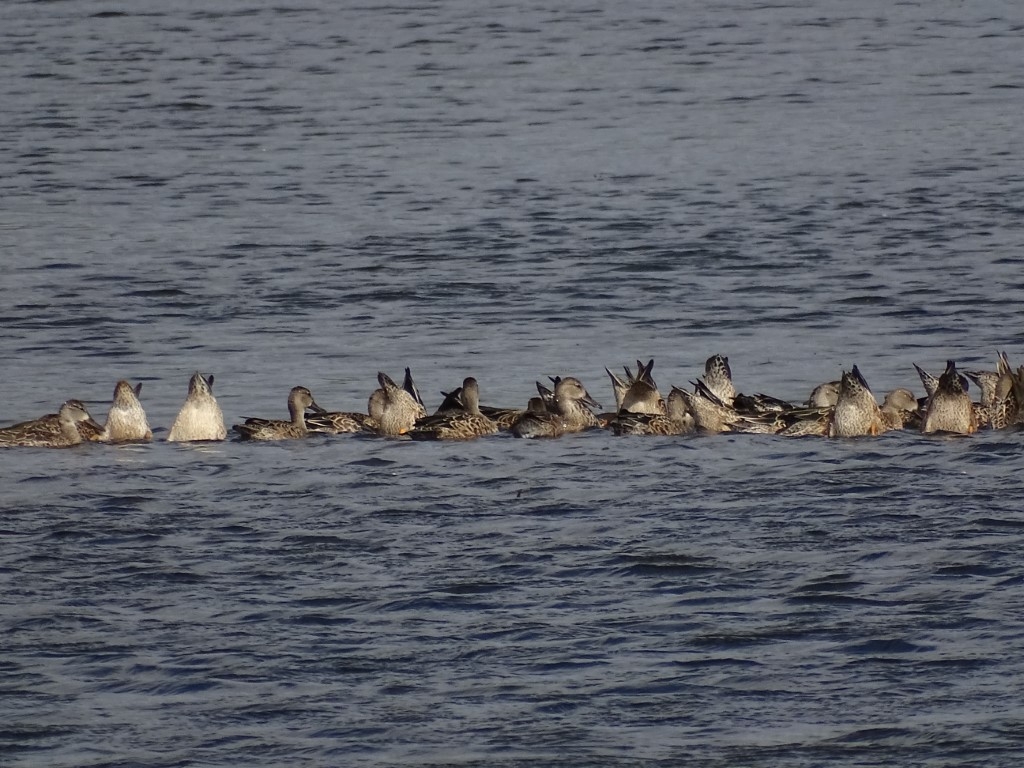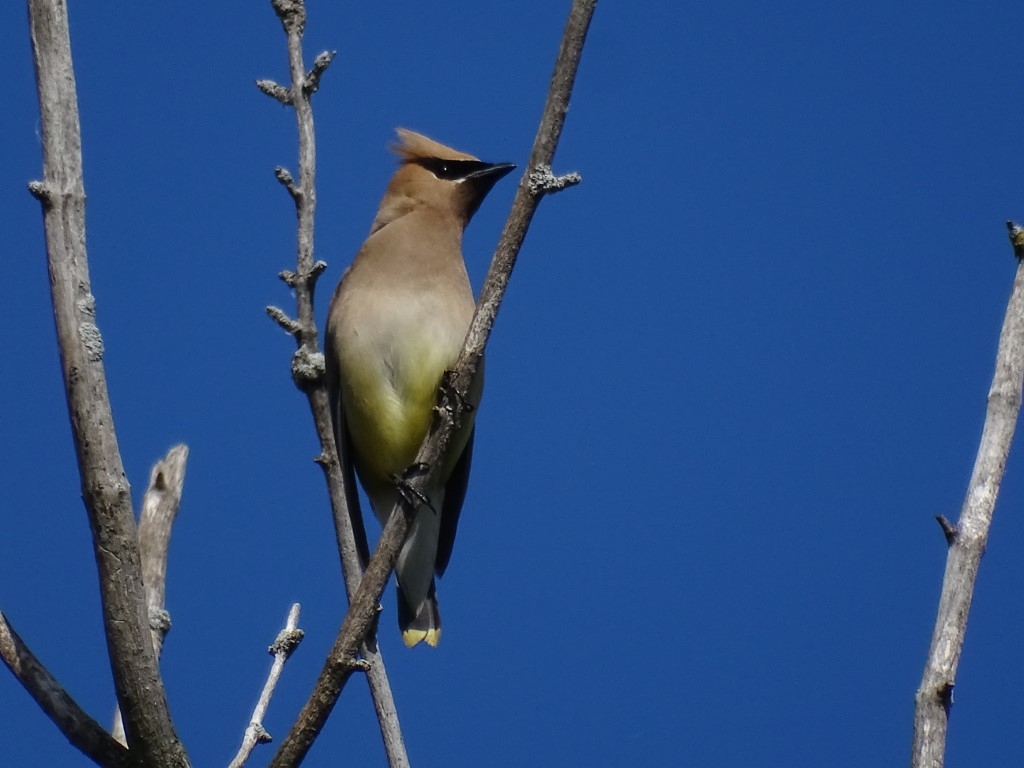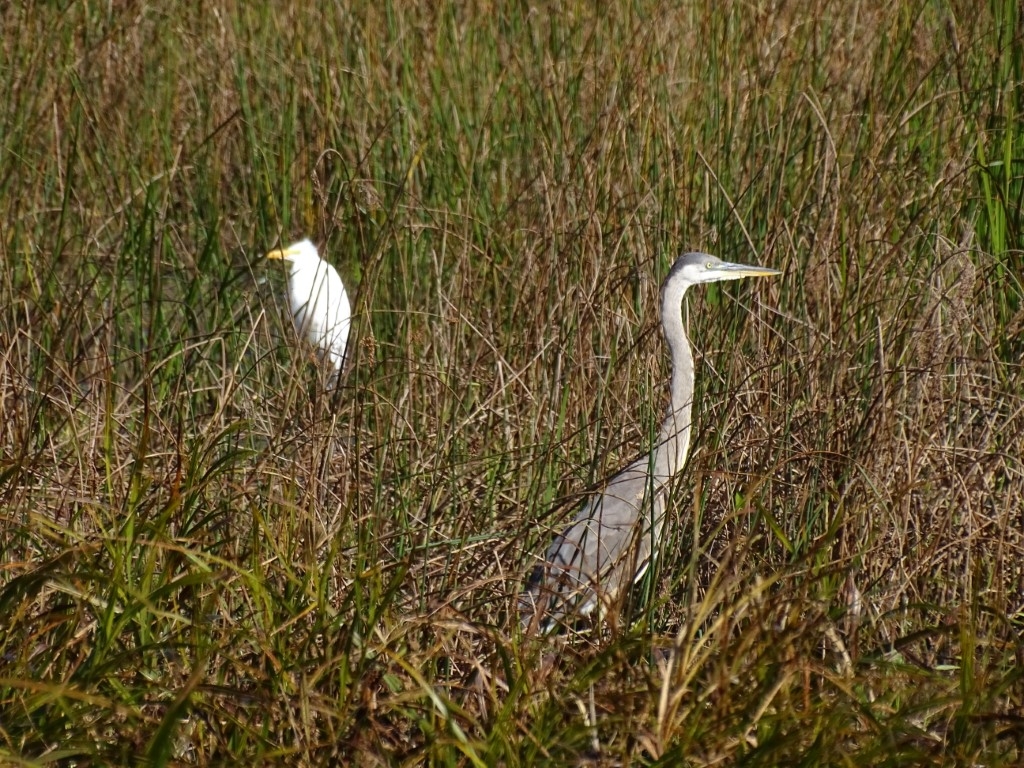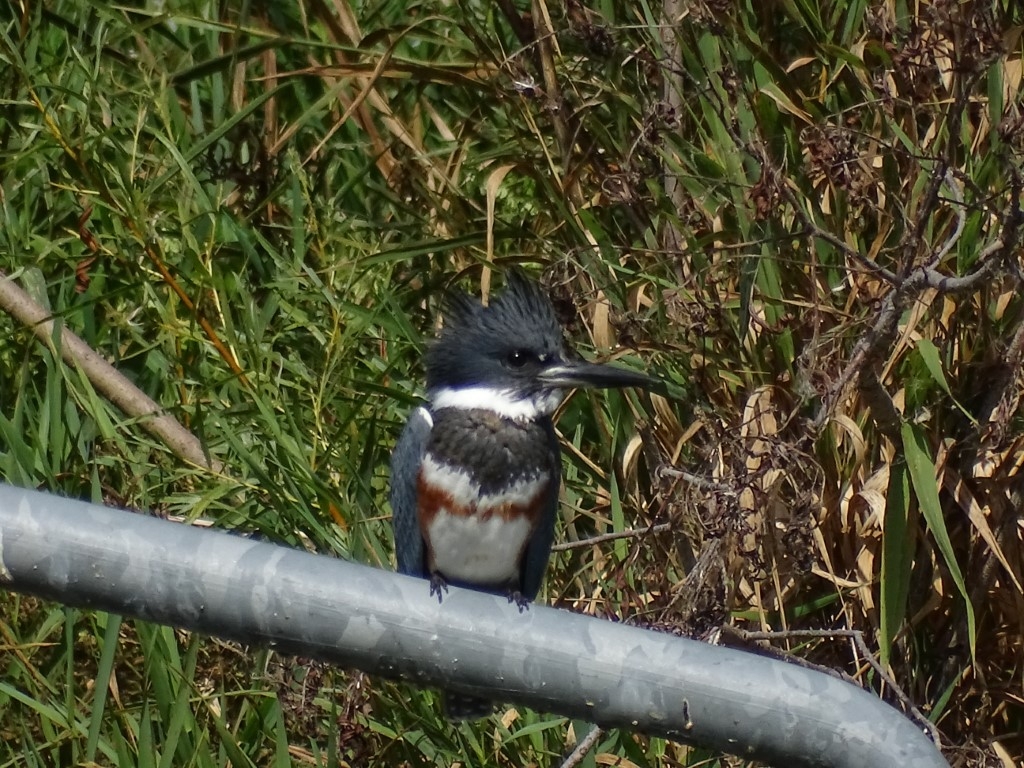It was fun keeping track of the bird species we saw in August, so my friend Jill and I have decided to continue counting into September. We usually hike in the fall—especially to leaf peep, but we’ve rarely counted birds. Right now the fall migration is in full swing.
It’s harder to ID some birds this time of year because they don’t vocalize much. And most birds are molting and growing in their winter feathers which are much more drab. It’s no longer breeding season so males don’t need to attract mates, and if you don’t need to be flashy, it’s much safer to blend in.
These little ducks are called Blue-winged Teals. Most of them are females. The males head south early because they’re not involved in raising ducklings, and this species doesn’t fly when it’s molting (replacing feathers).

The females hang out in marshes in late summer until the feathers they need have grown in, and then they make the flight south to the Gulf states, Mexico or Central America where they spend winter. This group was doing a little feeding activity together. We counted almost 100 of them.
We saw Cedar Waxwings everywhere we went. They gather in flocks in the fall and eat fruit and insects:

We spotted more than a dozen Great Egrets (the white bird) and several Great Blue Herons that were fishing or flying overhead:

And this sweet little bird is a juvenile Eastern Phoebe. It was hunting insects in the marsh. These birds are one of the first species to arrive back in the north each spring:

By my favorite sighting was a new species for us for this year—a Belted Kingfisher. Jill and I have heard their weird rattling call a few times while hiking, but we were never able to locate the bird.

This guy was sitting on the railing of a pier staring into the water. Look at those tiny feet!
Belted Kingfishers mostly eat fish, but according to the Cornell Lab of Ornithology, they also consumer “crayfish and may eat other crustaceans, mollusks, insects, amphibians, reptiles, young birds, small mammals, and even berries.”
I’ve already logged 46 bird species for September. Some migrating birds have even visited my backyard birdbaths including Northern Flickers, Swainson’s Thrushes a Tennessee Warbler and a Brown Thrasher.
Look up into the trees or put out a birdbath this time of year and you just may just spot some fun new bird visitors!
